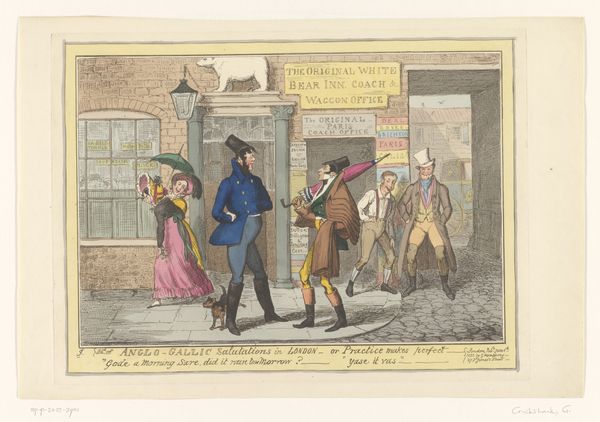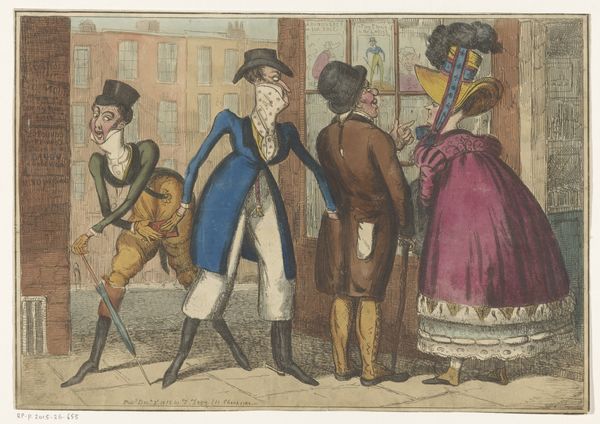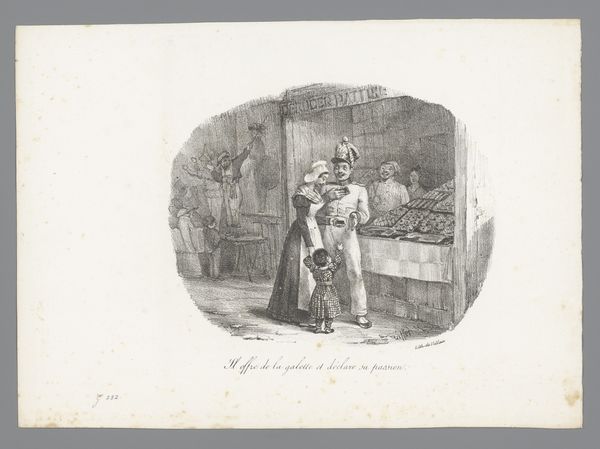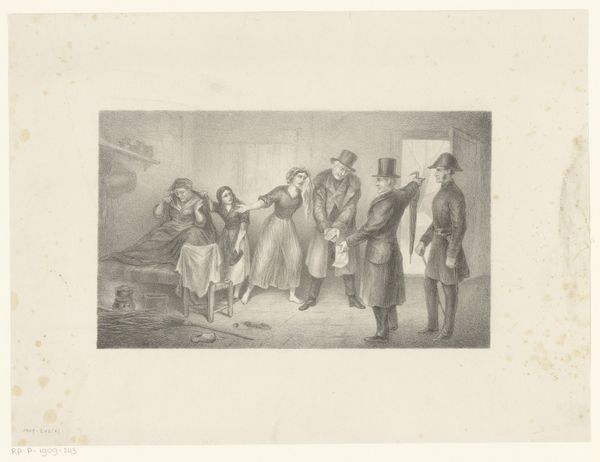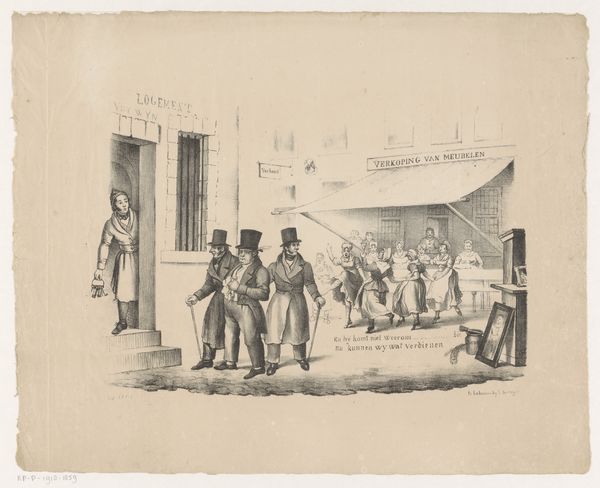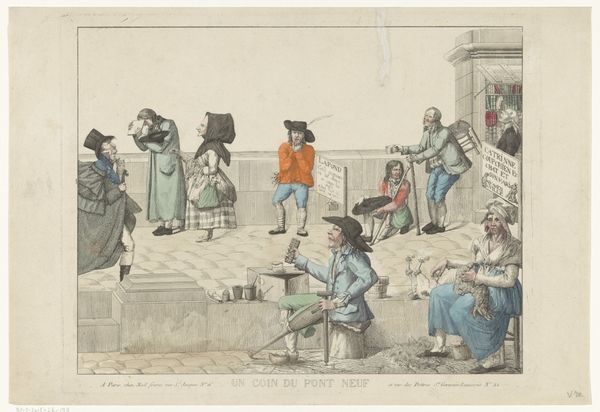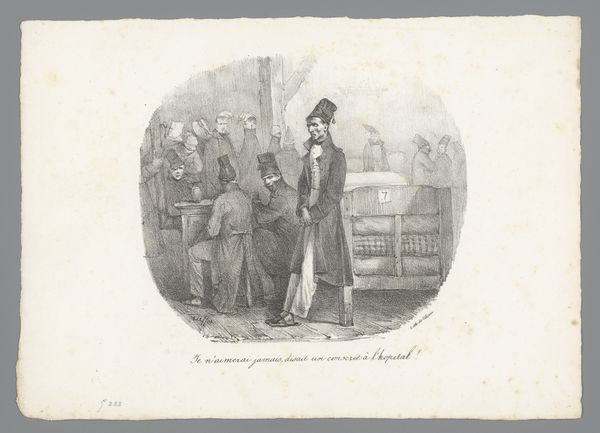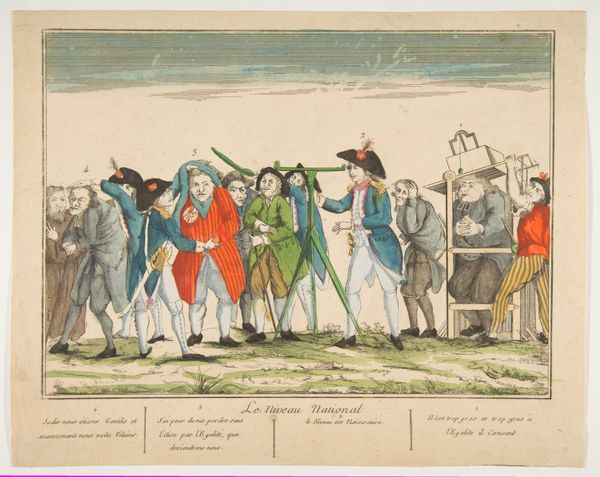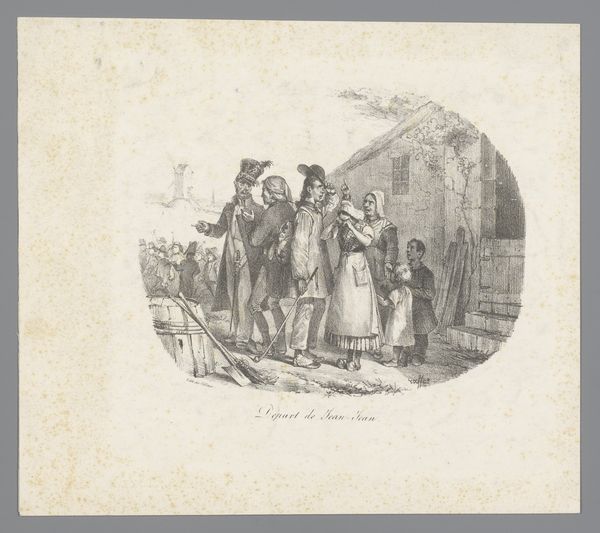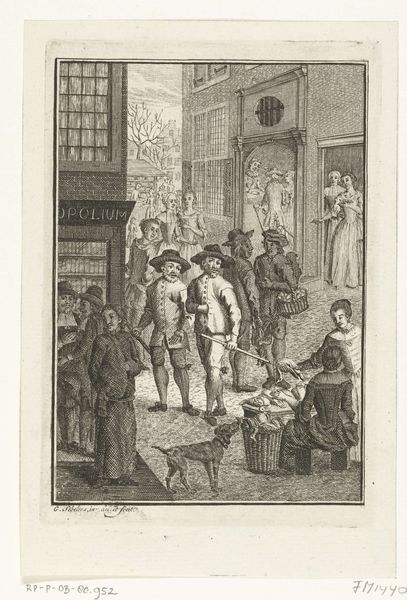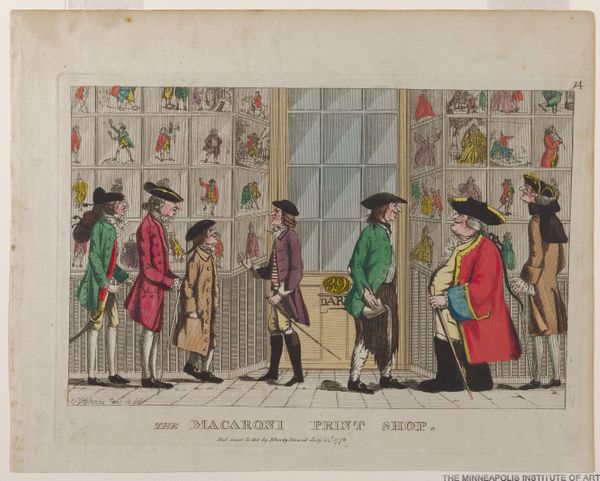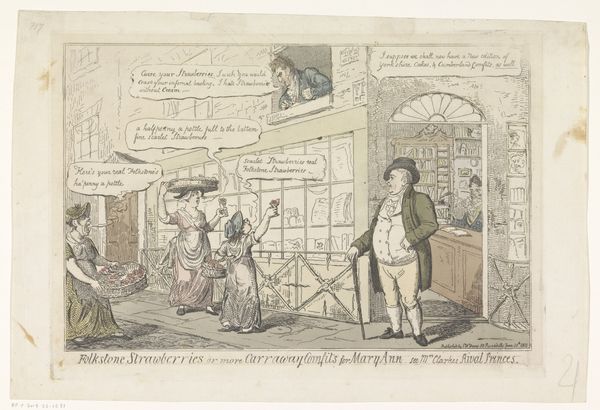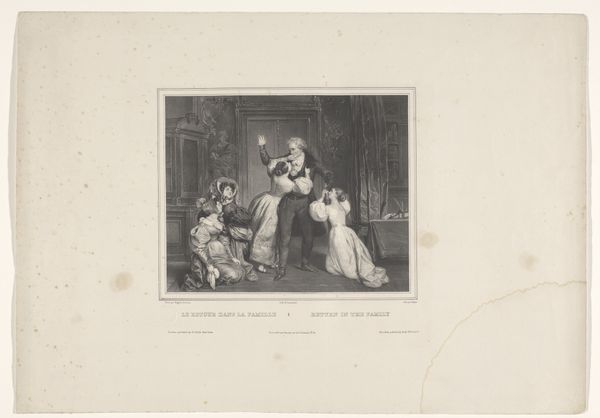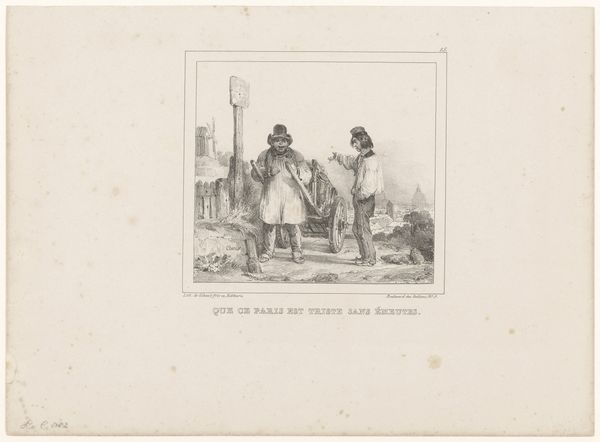
drawing, painting, print, etching, watercolor
#
drawing
#
water colours
#
painting
# print
#
etching
#
watercolor
#
romanticism
#
watercolour illustration
#
genre-painting
Dimensions: height 171 mm, width 244 mm
Copyright: Rijks Museum: Open Domain
Editor: This is "Etalage van drukker Delpech te Parijs," or "Display window of printer Delpech in Paris," by Carle Vernet, made around 1818-1825, and held at the Rijksmuseum. It seems to be a watercolor over an etching. What immediately strikes me is how this piece captures a snapshot of Parisian society. How do you see this piece in terms of its historical and social context? Curator: Well, the piece serves as a fascinating visual document of the evolving public sphere in post-Revolutionary Paris. Vernet, through this genre painting, subtly comments on the rise of consumer culture and the role of printed imagery in shaping public opinion and identity. Consider the diverse group of individuals gazing into the shop window; each represents different strata of society engaging with visual media. What might they be looking at? Editor: It’s hard to tell exactly what's displayed, but it seems like printed images – maybe political cartoons or portraits, given the period? Is the "album" sign significant? Curator: Precisely! The "album" suggests a curated collection of images, potentially reflecting emerging artistic trends and political ideologies circulated through print media. The composition also guides our attention – the shop window becomes a stage upon which Parisian society enacts its desires and aspirations. Furthermore, note the inclusion of the military officer. This reflects the strong presence of the military and its role in maintaining order and projecting power during that era. How does Vernet portray that figure, compared to, say, the child gazing at the prints? Editor: That’s a great point; the officer seems more self-assured, maybe even a bit aloof, while the child embodies curiosity. So Vernet’s really showing us how different groups are interacting with the same visual culture? Curator: Absolutely. Vernet isn't just presenting a scene, but he’s prompting us to consider how visual culture reflects and reinforces social hierarchies and identities in early 19th century Paris. Editor: I see now how this piece works on multiple levels; it's not just a pretty scene, but a commentary on the public’s relationship to art and power. I’ll definitely look at other Romantic era works with this lens now. Curator: Wonderful. Remember that artworks are historical actors, constantly shaping and being shaped by the world around them.
Comments
No comments
Be the first to comment and join the conversation on the ultimate creative platform.
